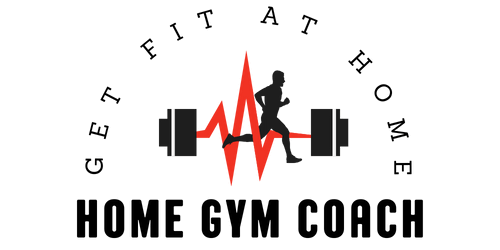Whether you’re a novice to the fitness world or looking to revamp your workout routine, Custom Workout Plans: Tips for Beginners has got you covered. This article offers valuable insights and guidance on how to create a workout plan tailored specifically to your needs and goals. From setting realistic targets to incorporating a variety of exercises, you’ll discover handy tips and tricks to kickstart your fitness journey with confidence and enthusiasm. Get ready to embark on a personalized workout plan that will keep you motivated and ensure steady progress towards your desired fitness level.

Determining Your Fitness Goals
Understanding the Importance of Goal Setting
Setting fitness goals is a crucial step in your fitness journey. Goals provide you with direction and motivation, helping you stay focused and committed to your workouts. They give you something to strive for and can greatly enhance your overall fitness experience. Whether your goal is to lose weight, build strength, improve cardiovascular endurance, or simply lead a healthier lifestyle, setting specific and achievable goals is key.
Assessing Your Current Fitness Level
Before embarking on any fitness program, it’s important to assess your current fitness level. This will help you determine where you are starting from and provide a baseline for tracking your progress. Assessments can include measurements such as body weight, body composition, and flexibility tests. You can also evaluate your cardiovascular endurance by performing activities like running, cycling, or swimming. By understanding your starting point, you’ll be able to set realistic goals that take into account your current abilities.
Identifying Specific Goals for Improvement
Once you have assessed your current fitness level, it’s time to identify the specific areas you want to improve. Perhaps you want to increase your upper body strength, improve your mile time, or become more flexible. By identifying these specific goals, you can tailor your workouts to target those areas. It’s important to set both short-term and long-term goals to keep yourself motivated and to ensure a sense of accomplishment along the way.
Consulting with a Fitness Professional
Seeking Expert Advice
Seeking expert advice is highly recommended, especially for beginners. Fitness professionals have the knowledge and expertise to guide you in creating a customized workout plan that suits your goals, abilities, and preferences. They can provide valuable information on proper form, technique, and safety precautions, helping you avoid potential injuries and get the most out of your workouts.
Understanding the Role of Fitness Professionals
Fitness professionals, such as personal trainers and nutritionists, play a crucial role in supporting your fitness journey. They are trained to assess your individual needs, create personalized workout plans, and provide guidance on nutrition and lifestyle choices. Whether you need help with strength training, cardiovascular exercise, or dietary adjustments, fitness professionals can offer the necessary expertise and support to help you reach your goals.
Working with a Personal Trainer
Working with a personal trainer can greatly enhance your workout experience. Trainers can provide one-on-one guidance, motivation, and accountability throughout your fitness journey. They will design customized workout routines tailored to your specific goals and monitor your progress along the way. Personal trainers can also teach you proper form and technique, ensuring that you are exercising safely and effectively.
Benefits of Consulting with a Nutritionist
While exercise is a crucial component of fitness, proper nutrition is equally important. Consulting with a nutritionist can help you optimize your diet to support your fitness goals. A nutritionist can provide guidance on meal planning, portion control, and the appropriate balance of macronutrients. They can also address any food allergies or dietary restrictions you may have, ensuring that you are fueling your body in the best possible way.
Creating a Balanced Workout Routine
Understanding the Components of Fitness
To create a well-rounded workout routine, it’s important to understand the different components of fitness. These include cardiovascular endurance, muscular strength and endurance, flexibility, and body composition. By incorporating exercises that target each of these components, you can achieve overall fitness and maximize your results.
Incorporating Cardiovascular Exercises
Cardiovascular exercises, such as running, cycling, or swimming, are essential for improving heart health and endurance. These exercises get your heart rate up and increase blood circulation, helping you burn calories and improve overall cardiovascular fitness. Aim to include at least 150 minutes of moderate-intensity cardiovascular exercise or 75 minutes of vigorous-intensity exercise per week.
Including Strength Training
Strength training is important for building muscle strength and endurance, improving bone density, and boosting metabolism. Incorporate exercises that target all major muscle groups, such as squats, lunges, push-ups, and dumbbell curls. Start with lighter weights and gradually increase the resistance as your strength improves. Aim for two to three days of strength training per week, with a day of rest in between each session.
Important Considerations for Flexibility Training
Flexibility training is often overlooked but is crucial for maintaining a full range of motion and preventing injuries. Incorporate stretching exercises that target all major muscle groups into your workout routine. Hold each stretch for 15-30 seconds and repeat each stretch two to three times. Consider complementing your flexibility training with activities such as yoga or Pilates to further improve flexibility and balance.
Tailoring Exercises to Personal Preferences
Choosing Activities You Enjoy
To make your workout routines sustainable and enjoyable, choose exercises and activities that you genuinely enjoy. Whether it’s dancing, hiking, swimming, or playing a sport, finding activities that you look forward to will keep you motivated and engaged. Experiment with different types of exercise until you find what suits you best, and don’t be afraid to mix things up to keep your routine fresh and exciting.
Exploring Different Workout Options
Don’t limit yourself to just one form of exercise. Explore different workout options to keep your routine diverse and interesting. Try out various group fitness classes, online workouts, or outdoor activities. By incorporating a variety of exercises, you can target different muscle groups, prevent boredom, and challenge your body in new ways.
Finding the Right Mix of Cardio and Strength Training
Finding the right balance between cardiovascular exercise and strength training is essential for overall fitness. Aim to have a mix of both in your weekly routine, considering your specific goals and preferences. For example, if your goal is primarily weight loss, you may want to emphasize more cardiovascular exercise. If muscle building is your focus, prioritize strength training while still including cardiovascular exercise for overall health.
Considering Individual Limitations
It’s important to consider any individual limitations or health concerns when tailoring your workout routine. If you have any existing injuries or medical conditions, consult with a healthcare professional or a fitness expert before starting a new exercise program. They can provide guidance on modifications or exercises that are safe and suitable for your specific needs.

Setting Realistic Time Commitments
Assessing Your Schedule and Time Availability
When creating a workout routine, it’s important to assess your schedule and determine how much time you can realistically commit to exercise. Consider your work hours, family commitments, and other responsibilities. Be honest with yourself about the amount of time you can dedicate to working out and create a schedule that is manageable and sustainable.
Determining Weekly Workout Frequency
The frequency of your workouts will depend on your goals and fitness level. Aim for a minimum of three to five days of exercise per week, with at least one rest day in between sessions to allow for recovery. As your fitness improves, you can gradually increase the number of days you engage in physical activity. However, be mindful of not overexerting yourself and listen to your body’s signals for rest and recovery.
Planning Workout Duration
The duration of your workouts will also depend on your goals and fitness level. It’s recommended to start with shorter workout sessions, typically around 30 minutes, and gradually increase the duration as you build stamina and endurance. Aim for a total of at least 150 minutes of moderate-intensity aerobic activity or 75 minutes of vigorous-intensity aerobic activity spread throughout the week.
Considering Rest Days
Rest days are just as important as workout days. They allow your muscles and body to recover and repair, reducing the risk of overtraining and injury. Incorporate at least one rest day per week, where you engage in lighter activities or simply focus on stretching and relaxation. Rest days give your body the chance to rejuvenate, ensuring that you stay healthy and motivated for the long term.
Gradually Increasing Intensity
Understanding the Importance of Progression
Gradually increasing the intensity of your workouts is key to making progress over time. Your body adapts to the demands placed on it, so it’s important to challenge yourself by progressively increasing the difficulty of your workouts. This can be done by increasing the weight, speed, or resistance of your exercises.
Avoiding Overexertion and Injury
While it’s important to challenge yourself, it’s equally important to avoid overexertion and the risk of injury. Pushing yourself too hard, too fast can lead to burnout or physical strain. Listen to your body and pay attention to warning signs of fatigue or pain. Gradually increase the intensity of your workouts in a safe and manageable manner, always prioritizing proper form and technique.
Implementing the Principle of Overload
The principle of overload states that in order to make gains in fitness, you must progressively overload your body with more demanding workouts. This can be achieved by increasing the intensity, duration, or frequency of your exercise sessions. For example, if you’ve been running for 20 minutes, increase it to 25 minutes or try adding some intervals to your routine. By gradually increasing the workload, you will continue to challenge your body and see continued progress.
Monitoring and Adjusting Intensity Levels
Monitoring your intensity levels is crucial to ensure that you are working out at the appropriate level for your goals. You can use tools such as heart rate monitors, perceived exertion scales, or fitness trackers to track your intensity during workouts. Adjust your intensity levels as needed based on your goals, recovery time, and overall fatigue. It’s important to strike a balance between challenging yourself and avoiding overtraining.

Tracking Progress and Making Adjustments
Importance of Regular Assessment
Tracking your progress is essential to stay motivated and ensure that you are reaching your fitness goals. Routinely assess your performance, body measurements, and any other relevant metrics to gauge your progress. This can help you identify areas of improvement and make necessary adjustments to your workout plans to keep moving forward.
Monitoring Performance Indicators
Monitoring performance indicators, such as improved run times, increased weight lifted, or improved flexibility, can provide concrete evidence of your progress. Keep a workout journal or use fitness apps to track your workouts and note any improvements or milestones achieved. These indicators can be a great source of motivation and help you stay on track with your fitness goals.
Adjusting Workout Plans Accordingly
As you progress in your fitness journey, it’s important to regularly assess and adjust your workout plans accordingly. Your body adapts to the stress placed upon it, so it’s necessary to introduce new challenges and variations to keep making progress. This can include changing exercise routines, increasing resistance or intensity, or trying new activities. Listen to your body and make adjustments that align with your goals and capabilities.
Staying Consistent and Motivated
Creating a Supportive Environment
Creating a supportive environment can greatly contribute to your success and motivation. Surround yourself with like-minded individuals who share similar fitness goals or find a gym or fitness community that provides a positive and encouraging atmosphere. Having a network of people who understand and support your fitness journey can make a significant difference in your consistency and overall enjoyment.
Setting Milestones and Rewards
Setting milestones and rewards along the way can help keep you motivated and give you a sense of achievement. Break down your larger fitness goals into smaller, more manageable milestones. For each milestone reached, reward yourself with something you enjoy, such as a new workout outfit, a massage, or a day off. Celebrating your progress can boost your morale and reinforce the importance of staying consistent.
Seeking Accountability
Accountability plays a vital role in maintaining consistency. Find a workout buddy, join a fitness class, or hire a personal trainer to help keep you accountable. Knowing that someone is expecting you to show up can greatly increase your commitment and motivation. Share your goals with someone you trust and ask them to check in with you regularly to ensure you are staying on track.
Keeping the End Goal in Mind
Throughout your fitness journey, it’s important to keep your end goal in mind. Remind yourself why you started and what you hope to achieve. Visualize yourself reaching your goals and how it will positively impact your life. By staying focused on your end goal, you can overcome challenges and stay motivated to consistently work towards your desired outcome.

Avoiding Common Workout Mistakes
Skipping Warm-Up and Cool-Down
Skipping the warm-up and cool-down can increase your risk of injury and hinder your workout performance. Always start your workouts with a proper warm-up, which should include light cardiovascular activity and dynamic stretches to warm up your muscles. Similarly, end your workouts with a cool-down, which should include static stretching to promote muscle recovery and decrease post-workout soreness.
Neglecting Proper Form and Technique
Proper form and technique are crucial for preventing injuries and maximizing the benefits of your exercises. Take the time to learn and practice proper form for each exercise you do. This may involve seeking guidance from a fitness professional or using mirrors to ensure your alignment is correct. Focus on quality over quantity and listen to your body for any signs of discomfort or strain.
Not Prioritizing Recovery and Rest
Rest and recovery are essential for allowing your body to repair and adapt to the stress of exercise. Neglecting rest days and recovery techniques can lead to overtraining, fatigue, and increased risk of injury. Make sure to schedule regular rest days into your fitness routine and engage in activities that promote recovery, such as stretching, foam rolling, and getting enough sleep.
Ignoring Nutrition
Proper nutrition is essential for fueling your workouts and supporting your overall fitness goals. Neglecting nutrition can hinder performance and prevent you from reaching your full potential. Make sure to nourish your body with a balanced diet that includes a variety of fruits, vegetables, lean proteins, whole grains, and healthy fats. Stay hydrated and consider consulting with a nutritionist to optimize your dietary choices for your specific needs.
Adapting to Changing Fitness Levels
Recognizing Plateaus and Adjusting
It’s common to reach plateaus in your fitness journey, where progress seems to stall. It’s important to recognize these plateaus as normal and not get discouraged. When you notice a plateau, it’s a sign that your body has adapted to your current routine, and it’s time to make adjustments. This can involve changing your exercises, increasing the intensity, or incorporating new activities to challenge your body in different ways.
Modifying Workout Plans as Fitness Improves
As you become fitter and stronger, your workout plans may need to be modified to continue challenging your body. Increase the intensity, duration, or frequency of your workouts to keep pushing your limits. Gradually introduce more advanced exercises or try new fitness classes to further challenge yourself. By constantly adapting your workout plans, you can continue to make progress and avoid plateaus.
Addressing New Challenges and Goals
As your fitness levels improve, new challenges and goals may arise. It’s important to address these challenges and set new goals to keep your workouts exciting and engaging. Whether it’s training for a specific event, mastering a new exercise, or trying a different fitness discipline, embracing new challenges will keep you motivated and prevent boredom. Embrace the opportunity to continually grow and evolve in your fitness journey.
In conclusion, determining your fitness goals, consulting with a fitness professional, creating a balanced workout routine, tailoring exercises to personal preferences, setting realistic time commitments, gradually increasing intensity, tracking progress and making adjustments, staying consistent and motivated, avoiding common workout mistakes, and adapting to changing fitness levels are all essential components for beginners to consider when embarking on a custom workout plan. By incorporating these tips into your fitness journey, you can create a plan that is tailored to your individual needs, preferences, and goals. Remember to listen to your body, be patient with the process, and enjoy the journey towards a healthier and fitter version of yourself.



